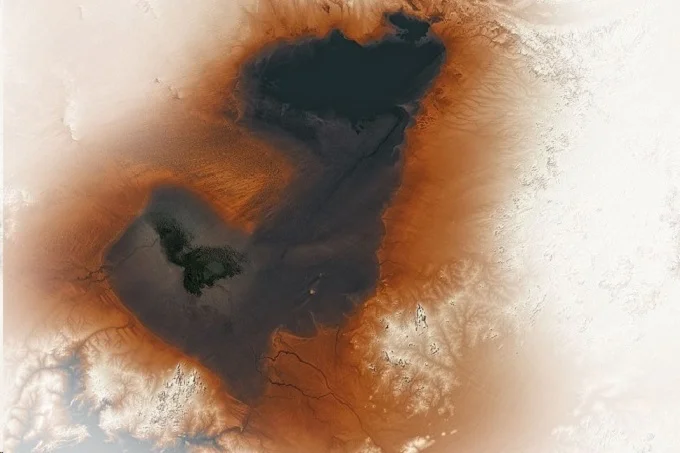Several thousand years ago, Mega Chad lake was the largest in Central Africa, and if it existed in the same volumes now, it would be the largest in the world. NASA shared a satellite image of this body of water in its current boundaries.
This body of water called Mega Chad stretched out on the site of the now existing Sahara Desert and had an area of 390 thousand square kilometers.
According to experts, the lake took two hundred years to shrink to 350 square kilometers. Currently, residents of Niger, Nigeria, Chad, and Cameroon are actively pumping water out of it, and the lake continues to shrink.
In 2015, scientists detailed how long it took for the ancient lake to shrink to its current size. Researchers wrote that about 5,000,000 years ago, the North African wet period with lots of rainfall ended, and the largest lake in Africa began to shrink.
The “Bodele Basin” area was covered by water thousands of years ago. According to researchers, about a thousand years ago, there were still remnants of moisture. However, the lack of rain eventually dried up the lake.
Today, Bodele is the largest source of dust that crosses the Atlantic with the winds and has a beneficial effect on the Amazon rainforest. Nearly two hundred million tons of dust and sand are sent by air from the Sahara toward the Amazon forests each year, but about fifteen percent of this mass is deposited in the ocean.
Nevertheless, the remaining one hundred and fifty million tons reach the Amazon and replenish its soil with, for example, twenty thousand tons of the phosphorus it so badly needs. That’s how much the river leaches into the ocean each year.
